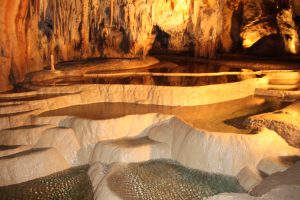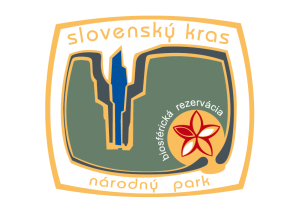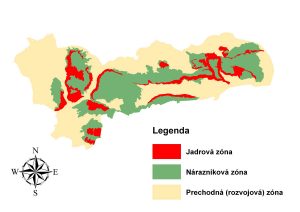


Slovak Karst Biosphere Reserve
Year of designation: 1977
Member of network CaveMAB: https://cavemab.com/
Total area: 74 480 ha

The Slovak Karst is the largest karst area of the plateau type in Central Europe located in the south-eastern part of Slovakia, at the border with Hungary. It is a significant territory in terms of the occurrence of geological, geomorphological phenomena and groundwater resources in terms of the occurrence of unique species of fauna and flora. Karst phenomena are created by the corrosive and erosive activities of water in soluble limestones. These are bothy primary (lapis, karst depressions and valleys, sinkholes, karst springs, chasms, caves) classified as surface or underground, and secondary (dripstones, travertines). This territory was declared as a protected landscape area in 1973 and since 2002 the category of protected area changed to national park. In 1977 the Slovak Karst was registered in the World Network of Biosphere reserves under UNESCO’s Man and Biosphere Programme. The total area of the Slovak Karst Biosphere Reserve is 74,500 ha. Its borders have been marked concurrently with the boundaries of the protection landscape area and its protection zone. In the process of territory zonation in 1988, the geomorphological character of the Slovak Karst played an important role. The area of the core area is 8 857 ha, the buffer zone is 23 395 ha and transition zone is 42 248 ha. A karst landscape is characterized not only by its relief and bedrock, but also by its special hydrology. The circulation of water in a karst follows rules different from those of other regions. There are 1300 caves known in the Slovak Karst, which since 1995, together with the caves of the adjacent Aggtelek Karst in Hungary, have been included in the UNESCO World Cultural and Natural Heritage List. The Slovak Karsts variety of habitats and highly diverse vegetation reflect its climatic and geological conditions and the geomorfologically distinct karst phenomena. Its flora is one of the richest in
Central Europe. The uniqueness of the fauna of the Slovak Karst BR derives from its biogeographical location at the frontiers of the Pannonian part of the Eurosiberian steppe province, the  deciduous broad-leaved woodland province, and province of the Carpathian middlemountains.
deciduous broad-leaved woodland province, and province of the Carpathian middlemountains.
Conservation function
Some of the unique features of the Slovak Karst territory elicited interest in the past of various experts which was directed to nature protection. One of the first protected area was the setting up of the nature reserve of the Jasov cave in 1925. The promotion of a protected area network began in the 50s of the 20 century. A physicogeographical division separated the karst territory info a montane and an intermontane landscape. At the second stage of division, whre settlement, communications and economic landusse were taken as the differentiating criteria, was recognized an unsettled landscape of secondary forests, a landscape of cultural steppes and an industrialized landscape with an urban structure. The caves of the Slovak Karst are important not only for their geomorphological value, but also for the numerous finds of past settlement. These include the only evidence of Homo sapiens fossils in Slovakia.
Development function
The development function is possible only in Transition Area of Slovak Karst BR. The density of settlement is very uneven, but generally low. Most of the woodlands are coppice stands derived from repeatedly cut broad-leaved trees, and forest plantations cultivated by foresters. On the plateaux, forestry is predominant, with some agriculture. Settlements and related economic activities are concentrated in the basins and river valleys. The region has an industrial-rural character and more people are employed in agriculture then industry.
Logistic function
The research of Slovak Karst BR has long history. Since 1981 complex interdisciplinary research was provided by Slovak institute of Monument protection and Nature conservation in Bratislava. The inventory of flora and fauna was an essential part of this research. A basic survey of the floristic and phytosociology of the entire NP and BR has been completed. Much information about forests is also obtained from the regular inventories carried out during the preparation of production plans for forestry. Agricultural research projects have focused on the assessment of ecologically appropriate practices and the maintenance and restoration of landscapes characteristic of traditional use of meadows of the Slovak Karst Plateau. There are some educational trails for educational and cultural use of the Biosphere Reserve by its visitors.
